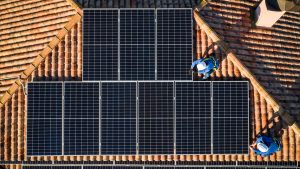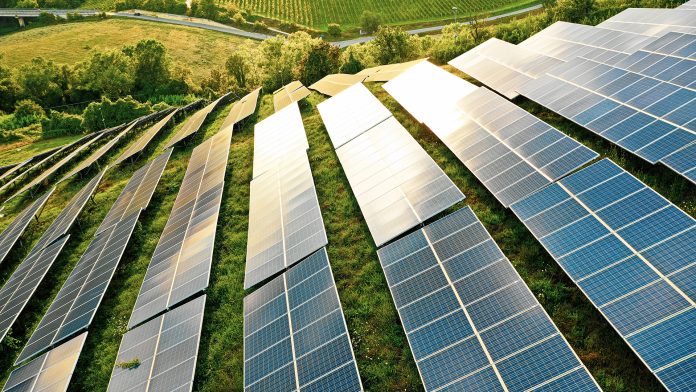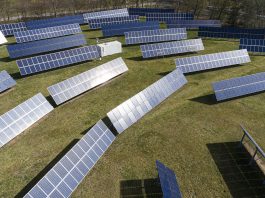Researchers from TU Dresden have developed a new concept for the formation of a heterojunction for photovoltaic cells.
Photovoltaic cells absorb sunlight which generates charge carriers that need to be guided to opposite sides of the photovoltaic diode to produce electrical current. To ensure that this process can occur, most solar cells include a heterojunction that offers an energetic landscape that drives the charges to be separated. However, forming a heterojunction is often not applicable to new photovoltaic materials.
Now, Professor Vaynzof and her team from TU Dresden, have created a new concept for the formation of a heterojunction for photovoltaics. The team took advantage of the crystalline phases of materials to demonstrate the formation of phase heterojunction solar cells for the first time.
The work, titled ‘Perovskite Phase Heterojunction Solar Cells,’ is published in the journal Nature Energy.
Forming a heterojunction for photovoltaic cells
For a photovoltaic cell to convert sunlight into electricity, a heterojunction is required. Silicon solar cells form a heterojunction by electrically fixing each side of the device, forming a p-n junction. For an organic solar cell to form a bulk heterojunction, different types of materials need to be blended. These concepts are not applicable to emerging classes of photovoltaic materials, however.
To overcome this issue, the team has demonstrated a novel concept for the formation of a heterojunction for photovoltaics by taking advantage of the fact that materials can often exist in different structural configurations. This phenomenon, called polymorphism, means that the same material can exhibit different properties, depending on the specific arrangements of atoms and molecules in its structure.
The team interfaced two phases of the same material, specifically, a caesium lead iodide perovskite – a highly efficient solar cell absorber material – in the beta and gamma phases, to form a phase heterojunction for photovoltaic cells.

The new concept improves efficiency and performance
“The optical and electronic properties of caesium lead iodide in its beta and gamma phase are different from each other,” explained Professor Vaynzof.
“By placing a gamma-perovskite on top of the beta-perovskite we were able to fabricate a phase heterojunction solar cell, that is significantly more efficient as compared to solar cells that are based on single phase perovskites.”
The researchers demonstrated that the top layer of gamma-phase influences the performance of photovoltaic solar cells.
“Even thin layers of gamma-perovskite led to a performance improvement due to the passivation of defects at the surface of the bottom layer. Thicker layers of gamma-phase resulted in significant improvement in all of the photovoltaic performance parameters with the champion device reaching a power conversion efficiency of over 20%,” explained Ran Ji, the lead author of the study.
“Advanced spectroscopic analysis revealed that this improvement in performance is associated with increased light absorption and the formation of an advantageous energetic alignment between the two phases,” added Professor Vaynzof.
Importantly, the researchers confirmed that the phase heterojunction remains stable during solar cell operation and even suppresses ion migration in the solar cell absorber, resolving a common problem for perovskite materials.
Utilising the heterojunction concept for the future
To realise the phase heterojunction concept, the team used two different fabrication processes for the top and bottom layers, opening the path to the formation of other such structures in the future.
Professor Vaynzof stated: “We hope that this novel concept combined with a simple fabrication route for phase heterojunctions will be applicable also to a variety of material systems in a range of electronic and optoelectronic devices.”
As many semiconductor classes exhibit polymorphism, the concept could pave the way to entirely new applications that operate based on phase heterojunctions.









